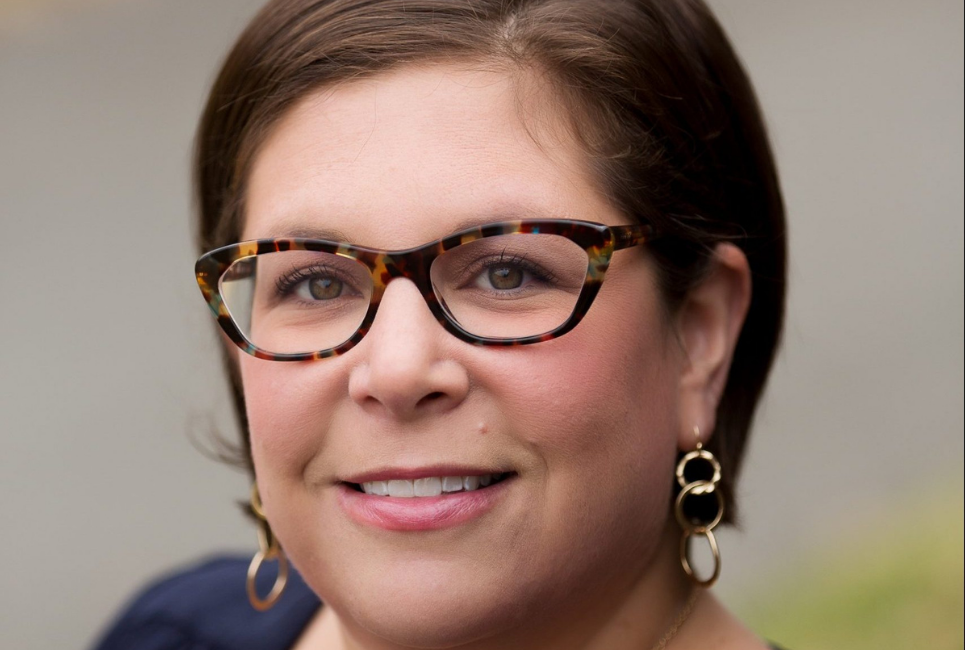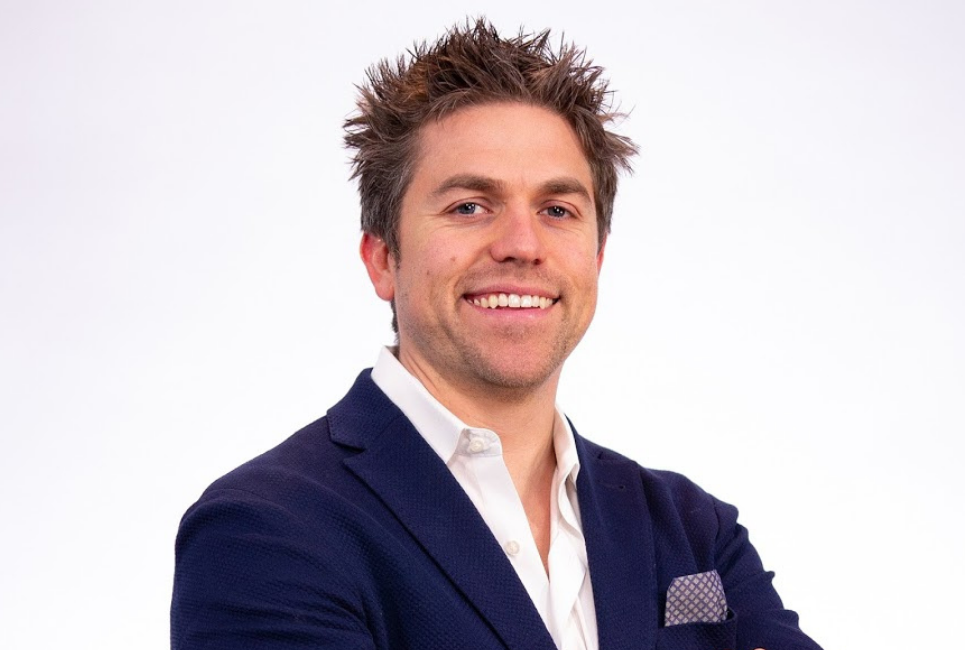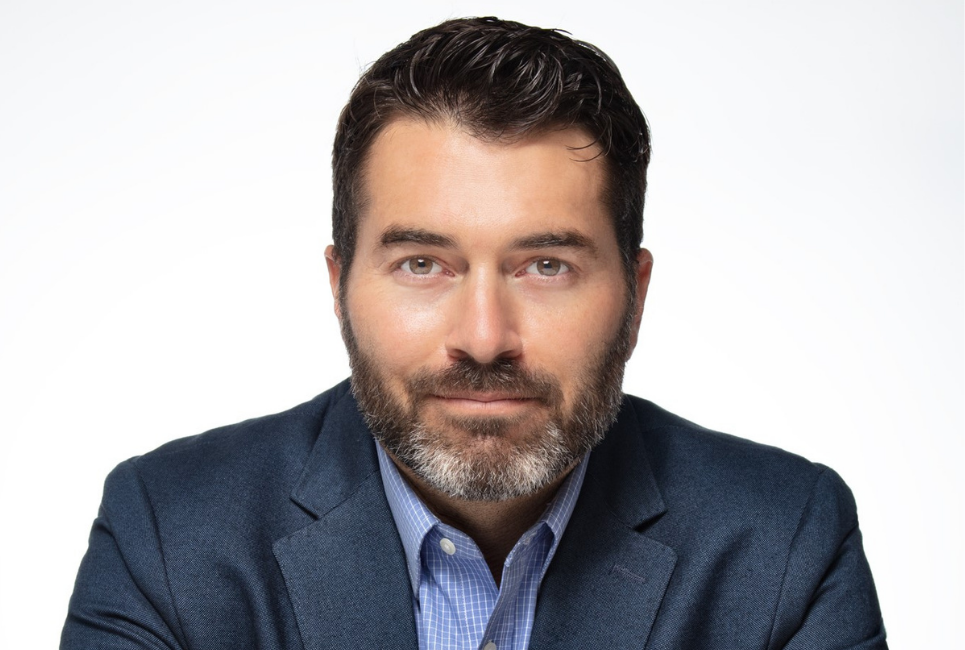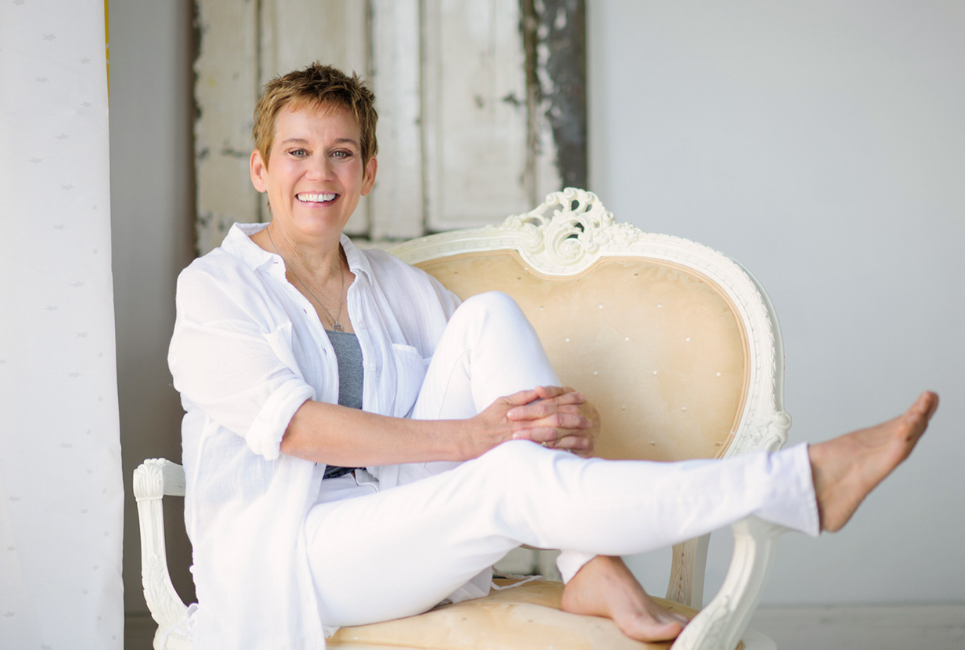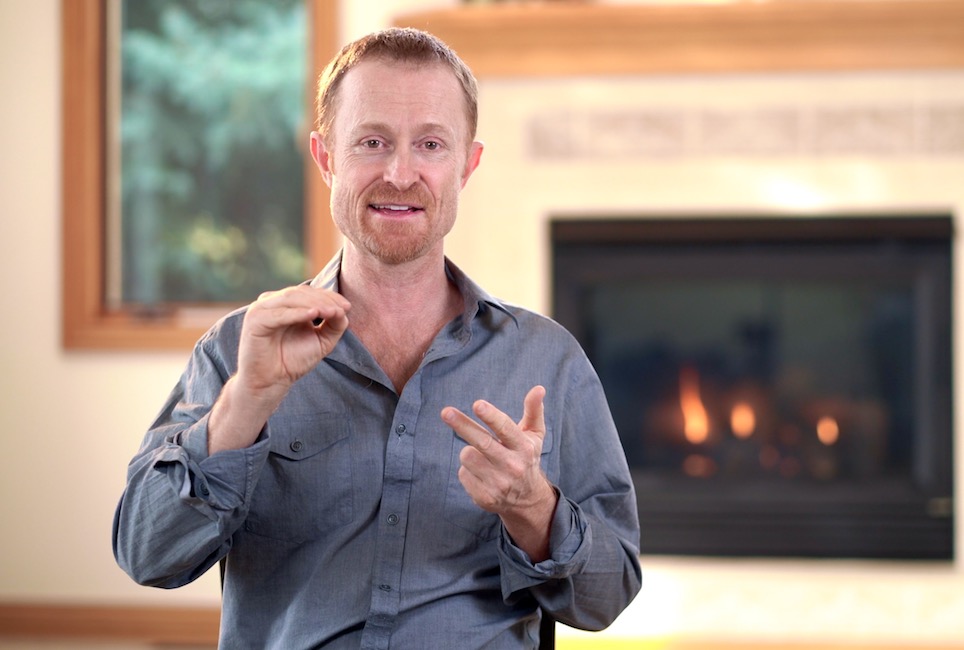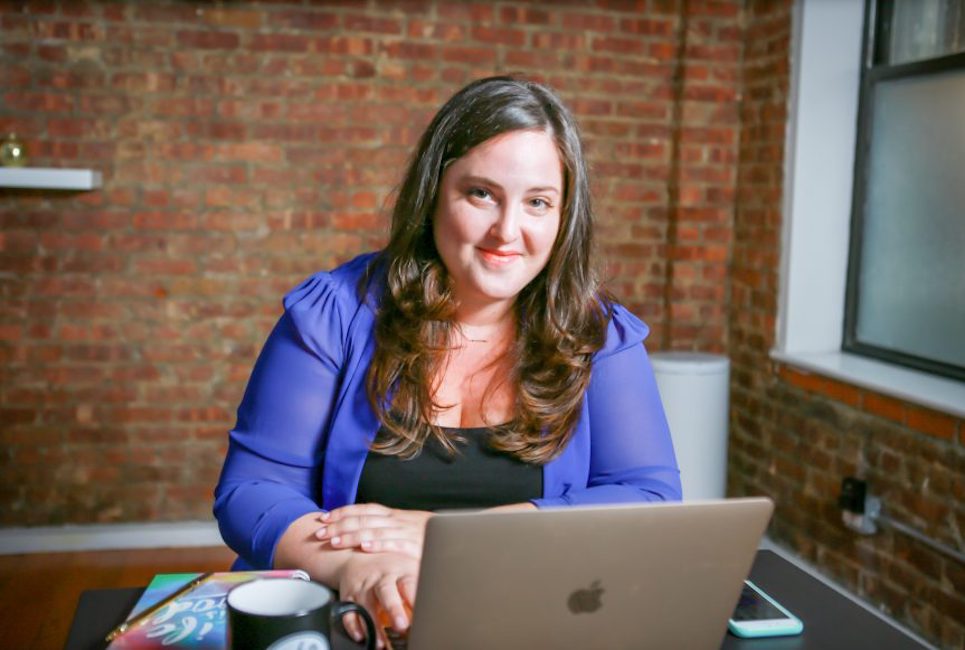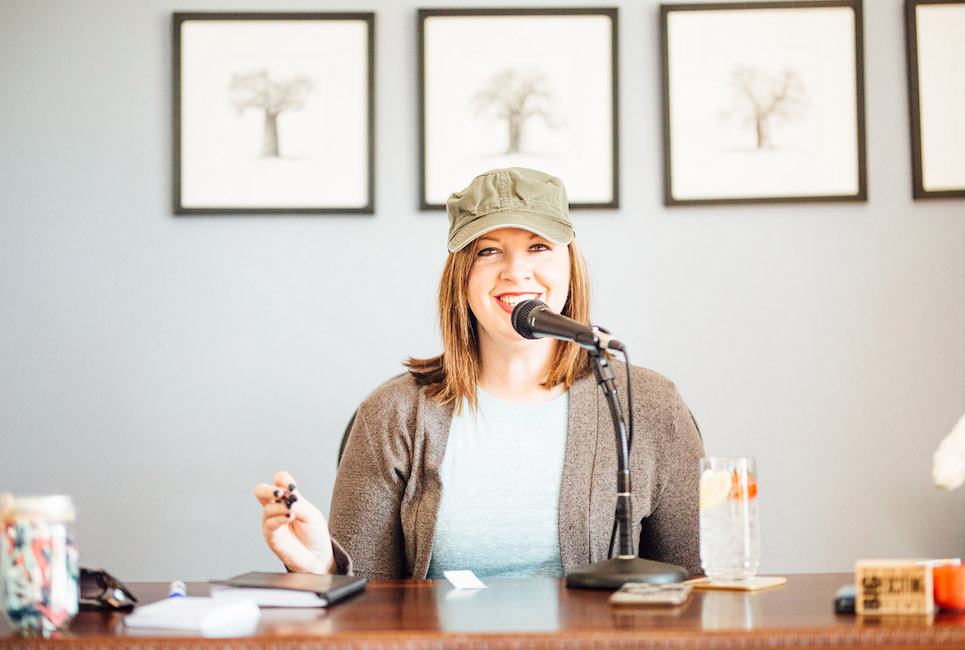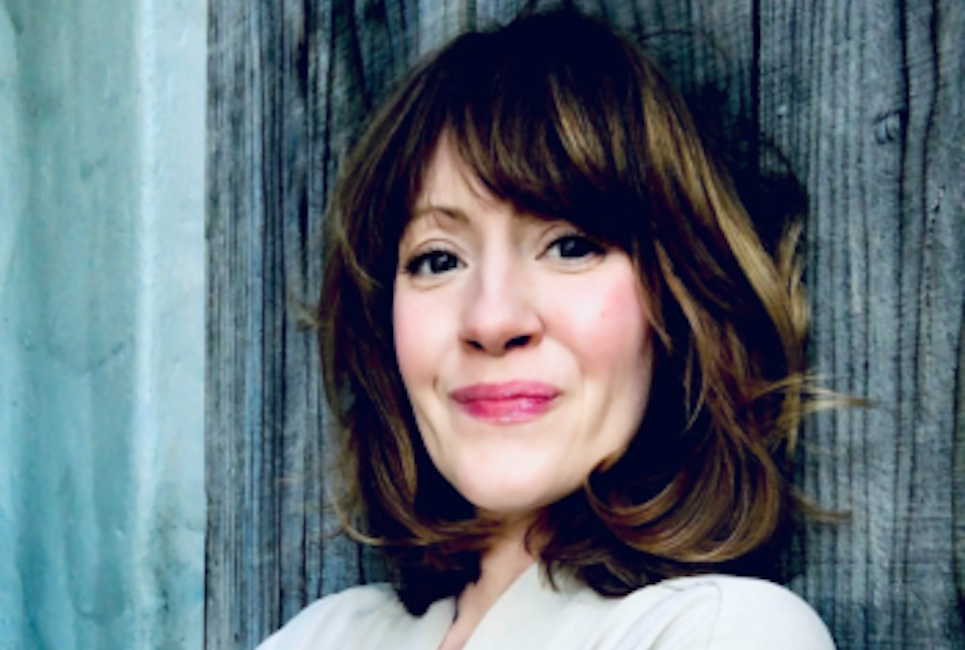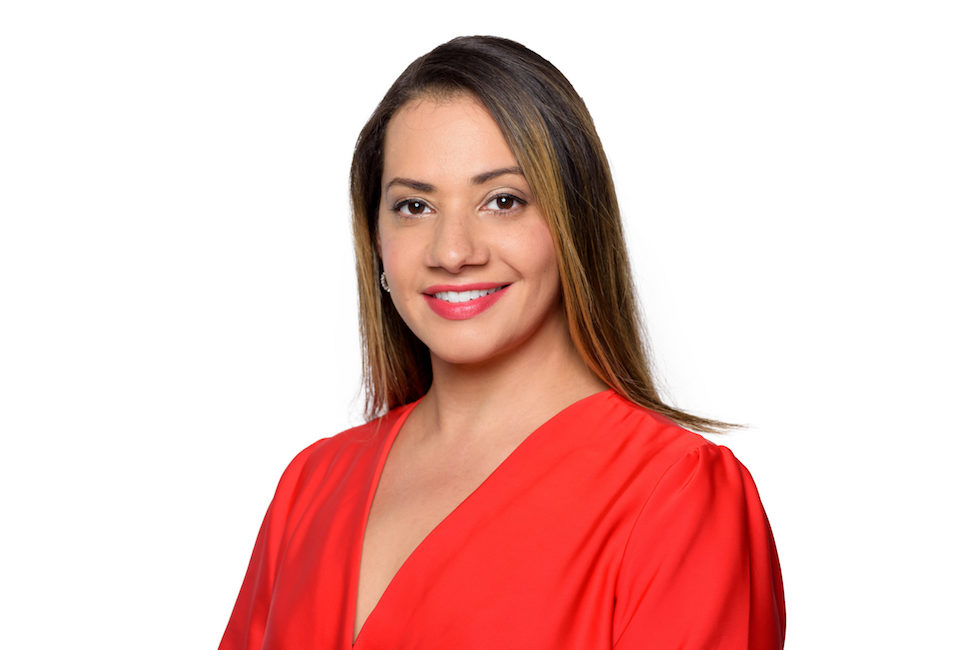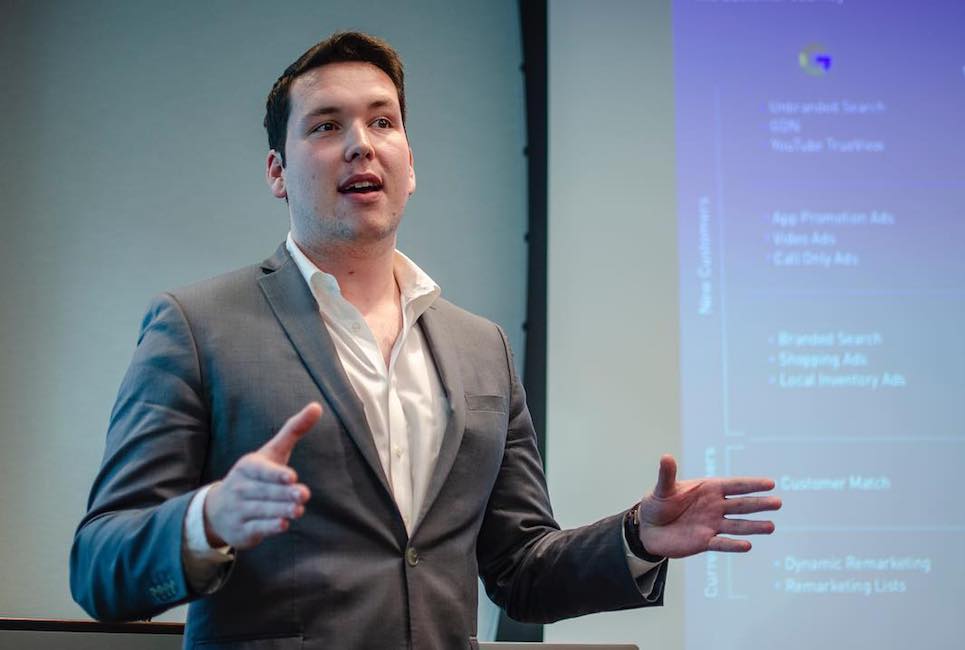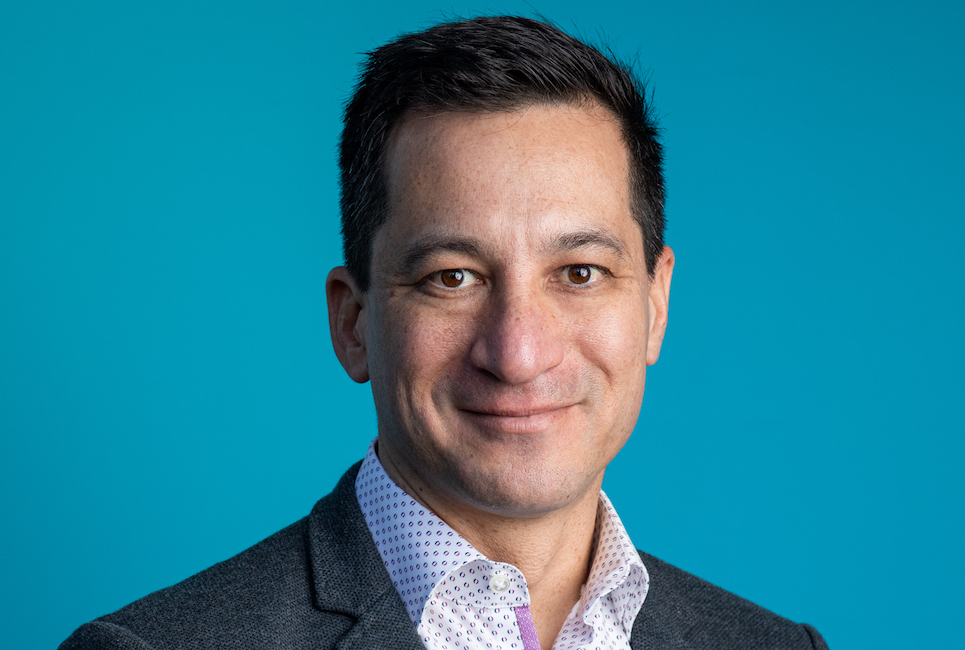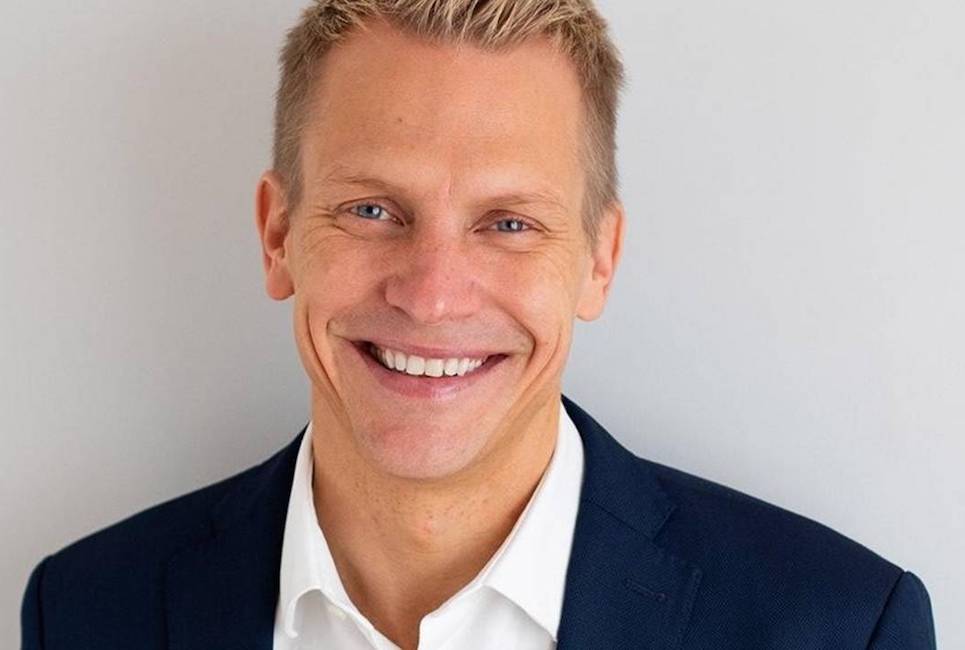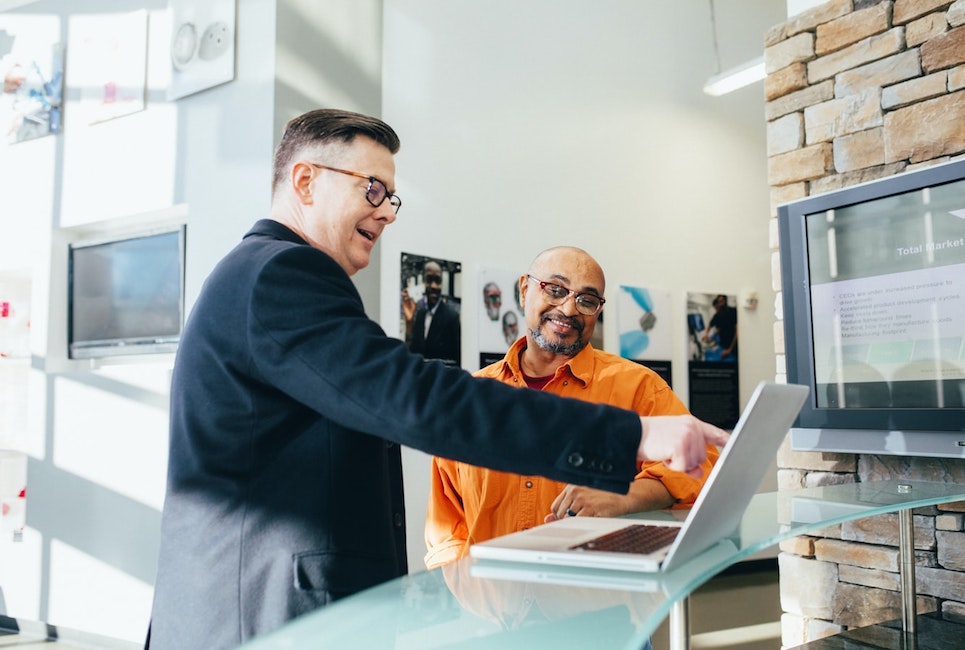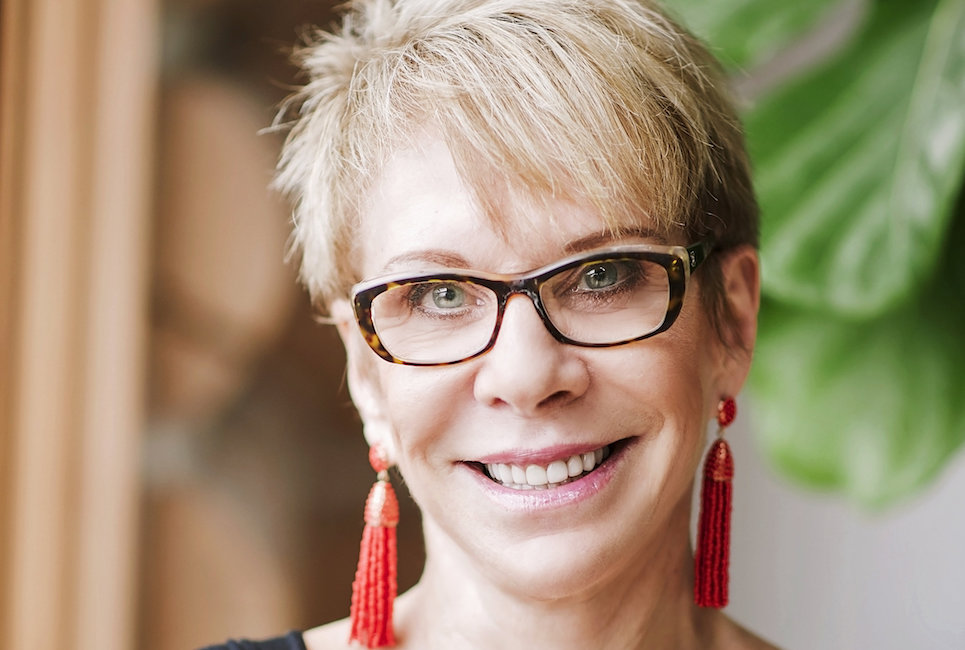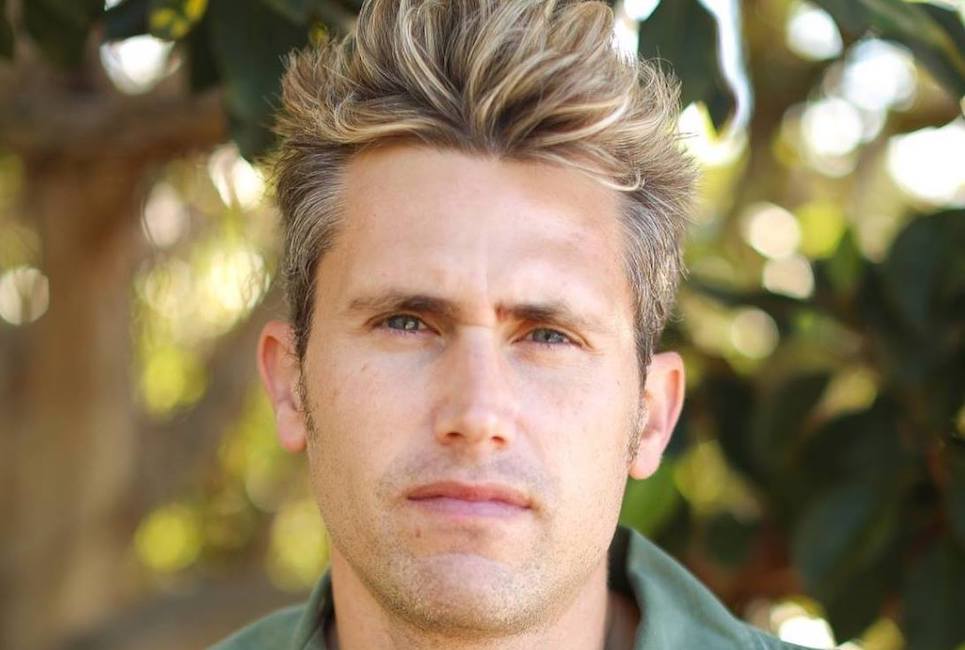Listen to our exclusive interview with Michael Unbroken:
Subscribe to this show on Spotify | iTunes | Stitcher | Soundcloud
How do you know if you have a valid business or that you even could be a coach that actually helps people? We spoke to an expert, Michael Unbroken, who had no intention of being a coach but saw a ton of signs that led him in that direction.
Today, he helps people who have dealt with childhood trauma live better lives and now runs a small successful team that is continuing to grow more and more. So much so, that he even got investment from Grant Cardone. Listen in for a ton of great tips and advice that will change the game for you and your journey whether you are a coach or not.
About Michael and Unbroken – in his own words:
“I didn’t sign up to be the spokesman for survivors of child abuse. In fact, this job sucks. I mean that.
The truth is that the universe chose me for this role. I have been gifted the ability to navigate the most harsh and vicious child abuse to come out on the other side seemingly whole. I say seemingly because there will always be a part of me that was stolen. I cannot get that back. None of the rage, drugs, sex, rock n’ roll, or anger will give me that thing that was stolen.
The world is both beautiful and brutal and I have seen the best and the worst of it. I know that the abuse I suffered has given me an undeniable strength that I was only able to tap into after falling face first into complete darkness.
There is truth in understanding that Mindset is Everything. There are no shortcuts, trust me I’ve tried them all. There is hard work and on the backside of that is getting your life back.
Think Unbroken is about sharing the tools and skills I have created and leveraged over a lifetime to help other people break free of The Vortex and become the person that they know they are capable of being. If I can do it then anyone can.”
Learn more about Michael and his work at > thinkunbrokenbusiness.com/challenge
We also recommend:
- Joanne Sonenshine: Grow & Scale Through Funding & Facilitated Collaboration
- Michelle McGlade: Mastering the Inside Out Game and Leadership of Self
Transcription of Interview
(Transcribed by Otter.ai, there may be errors)
Michael Unbroken 0:03
Welcome to the Change Creator podcast where entrepreneurs come to learn how to live their truth, get rich and make a massive difference in the world. I’m your host, Adam force co founder, Change Creator and co creator of the captivate method. Each week we talk to experts about leadership, digital marketing and sales strategies that you can implement in your business and like to go big visit us at Change Creator comm forward slash go big to grab awesome resources that will help drive your business forward. What’s up, everybody? Welcome back to the Change Creator podcast show This is your host, Adam force. If you missed the last episode, we released a conversation I had with Jay Shetty really relevant and powerful conversation about storytelling, storytelling is a very big part of branding. And as you know, we are all about creating powerful brands that people can fall in love with. This is such an important part of business. This is not, you know, a tactic like a webinar or a workshop, you know, I get so exhausted, hearing everybody trying to pitch the new tactic, and making a ton of money off it. Right, because people are desperate to find that, that one tactic when, in reality, it’s really the core principles behind these things that make it matter, right. And that’s what I love about branding. It’s, it’s, it’s how we actually differentiate the market. It’s how we make people feel, it’s how we build trust. This is what creates loyal customers long term success. It’s not the little tactics and how we deliver our information that’s always evolving and changing. And, you know, whatever. It’s the message. It’s the feeling, it’s the branding, these things matter the most, these are like core principles behind business and marketing. So it’s easy to overlook those things because everybody wants the immediate win. Like if I do this, then in six months, I’m gonna make X dollars, right? And that’s great. And you can start getting those immediate wins when you have the right branding set up. And then you’re setting up the, you know, you know, I don’t even like we do build the websites, but we build them as sales machines, right? How are we selling? Most people have their websites up, and they say, well, it’s just there. So I have some presence online. And that’s a huge mistake, because it’s a very valuable piece of real estate. So I don’t care if it’s just a sales funnel, it’s a website, these are web pages that are designed to build relationships with people and create sales, right? And so I don’t care if it’s a website, it’s quick funnels, or some other thing. They’re all just webpages and they all are important to the business. Alright, so we’re gonna be talking to Michael Unbroken today. Alright, so he is the founder of Think Unbroken. And so Michael has a ton of experience, and he is focused on childhood trauma, he’s built up tons of credibility in the space over time, he’s gonna explain how he started this business and how he’s, you know, built us a small team around it now and all the steps he had to take. So it’ll help you on your journey and understanding, you know, he’s taking this coaching approach, and I’m sure there’s a lot of coaches out here listening. And he’s done a lot of other work that he’s going to talk about, and how we got investment from a guy like Grant Cardone. And I think it’s such a great story we talked about towards the end of this conversation, because it’s really important to see how he put himself out there and created an opportunity and seized it. And look what happened. He now has this community of people he built around them in the Grant C ardones world, he got investment. Pretty awesome stuff. So a lot of good touch points for this conversation coming up. Okay. All right, guys. So enjoy this. And listen, we have two spots open with our brand studio. We are just closing out some incredible brands right now. And if you’re looking to get your branding done, and you want to get your your sales going online, with more lead generation, all that kind of stuff. We will help you and work very closely with you step by step. Just reach out, go to our website, you’ll see our services. This is such an important part of your business. So I hope you really are taking it seriously. If you’re not sure if it’s the right time. We have some articles there to help you just look for those articles I wrote about timing. It doesn’t make sense for you and all that stuff. Alright guys, let’s get into this conversation with Michael. Okay, show me the heat. Hey, Michael, welcome to the Change Creator podcast. How you doing today, man?
Adam, I’m so good. Brother. Thank you so much for the opportunity to come and chat with you today, man.
Yeah, absolutely. Absolutely. I think you we have a lot of common interest just from our little preliminary shot and people we follow and stuff like that. So I’m excited to hear about your journey. I definitely want you to share your grant cardones story, everybody hang tight. We’re gonna get into that. So Michael, like, you know, typical stuff, I just want to get some background I like to know, I like to kind of reverse engineer like, what’s going on today. That’s exciting. And then give us a little background on how you got there.
Yeah, absolutely. You know, today what’s really fascinating about my life is I live in a lot of different verticals. I’m a life coach. I’m a business coach. I’m a VP. I’m a board director, I do a lot of different things. And most importantly, it is my mission to empower people to become the hero of their own story and ultimately, end generational trauma. And and I recognize on a long enough timeline that will happen in my lifetime. I’m really trying hard to make that happen. Is it plausible? I don’t know yet. But I’m driven by this idea of empowering human beings to tap into their full potential. And it started because I’m a victim of child abuse. My mother was a drug addict, an alcoholic. When I was four years old, she actually cut off my right index finger. So that kind of creates baseline right, my stepfather super abusive. I was homeless as a kid. When I was 12 years old, I got high for the first time, started selling drugs. Got drunk at 13, expelled from school at 15 for selling drugs, of course, right? Got put into a last chance program, I learned so many practical business skills and that still didn’t graduate high school on time. They gave me the diploma, they were like, you just got to get out of here, man. And I was trying to find the solution for poverty. And it was thinking it was money, but I knew I had to make it legally. Because my friends were going to prison. My uncle’s in prison for life, my three childhood best friends had been murdered. I’ve been in handcuffs more times than I can count. Luckily, never went to jail. Somehow I just finagle my way out of those things. And then when I was 18, became an assistant manager at a Wendy’s had 52 people under me at 18 years old, made every mistake you can make in leadership. By 20. I was like, I need a job making $100,000 a year legally. And right around my 21st birthday, I landed a job with a fortune 10 company. This is no high school diploma, no college degree. And sure enough, I started making six figures. And then my life exploded and it just got way worse. I was 350 pounds, smoking two packs a day, drinking myself to sleep. And I was just like, what is happening? One day, I looked in the mirror Adam, and I said Michael, what are you willing to do to have the life that you want to have? The words no excuses, just results, came into my brain just reverberated through my body. Fast forward. 11 years later here I am talking to you, brother.
That’s the accountability mirror right?
Totally man, it was this thing where but it wasn’t I didn’t do it intentionally. I was just mad at myself. I was just pissed. I was like, Dude, what are you doing? Right? And and I went in that mirror and it became probably one of the most important things I’ve ever done in my life. If not the most important.
I love it. And wow, you said you were over 300 pounds, which now obviously, you look like you’re back in shape, and you’re doing good. And that’s a major change. And you know why? For people that don’t know, the accountability mirror is an idea from David Goggins book can’t hurt me. Michael and I were just talking about that earlier. So I brought it up, because I actually loved that point he made and you just hit it too, right? So it’s something that like, you look yourself in the mirror and said, yo, like, what are we doing here, man? You know, it’s like, Who do I really want to be right now?
Yeah, and the hard part is when you come from a traumatic background or abuse background, and everyone tells you, you’re not good enough, strong enough, capable enough, and then you’re negative reinforced with every time you step in your intuition, something bad happens, it’s the hardest thing you’ll ever do is be able to go You know what, I’m going to answer this question. And then I’m going to try to be the person I’m capable of being. And I argue that’s the most difficult thing anyone will ever do in their life.
Adam G. Force 8:43
Yeah, it’s tough. Because you know, with your background, which is pretty intense, you get lots of stories going on in your, in your mind that you tell yourself and obviously, as you know, now, it’s like, these things shape our behaviors, and then they become things we have to like break and change. And it’s a tough road, to kind of shift how you see the world and how you think about yourself in order to to get where you want to go. Right. So why don’t you tell us a little bit about unbroken? I want to hear kind of where the name comes from, I think we can get a good sense from what you’re telling me. And just how it started. Where’s the Epiphany happened for you to start this business?
Michael Unbroken 9:28
Yeah, absolutely. So the name came thinking broken came one night, three o’clock in the morning, you know, can’t sleep wide awake? And just thinking about and this was five years ago, almost six years ago now. And just thinking about this concept and this idea that anytime anyone has had any type of mental health element and their life anytime they don’t fit in the box, anytime they’re not that formulaic robot, they get labeled as broken and I was just like, That’s nonsense, man. Like, that’s not who I am. That’s not how I ever felt like, that’s not how I think. And then it was just like, oh my god think unbroken, like, that’s what it is. And it wasn’t intense, like I didn’t set out to set out to do this at them, no part of me was like, it’d be great. Let me be the spokesperson for, you know, child abuse that’s not on my radar. But I had been blogging, I’ve been educating myself, I’ve been learning about the impacts of trauma, I’ve been sharing it online, and people were just reaching out to me, and I kind of kept this under wraps for a couple of years, because I didn’t really know what I what my intention was, and I don’t want to do anything without intention. And slowly on the old blog, people would reach out and be like, Man, that thing you posted was amazing. I relate. And then that thing that you shared, you know, it changed my life. And then it was like, wow, you saved my life. And, and a huge amount of weight came with that, then it kept happening again, and again and again. And it was really wonderful, because what happened is I recognized and this is a weird moment out of my recognize that I had a moral obligation to step into this. Because what I had discovered meant that I needed to share it with other people as well, so that they can understand what they’re possible of doing in their lives also. And so thinking broken at the end of the day, it’s it’s a mission, it’s not even about me, that’s not it’s not called Michael, right. It’s it’s thinking broken, and I’m building out a team, I’m building out structures, I’m building out systems and support to break down the social narrative of people being broken in the world. So we can empower ourselves to become the hero of our own story, whatever that means for you. It’s not dictated by me. And that’s the thing, right? Can we help people tap into that part of them that says, I know, somewhere, dude, we all somewhere deep inside of us have that idea of who it is that we can be that mythical character that we have the ability to be that Superman, that Batman that whatever, you know, David Goggins, Fine, whatever. And in the thing about that is, it all starts with our mind, and it’s easy to throw around the words mindset, but like, just fix your mindset, life will be better. We all know, it doesn’t work that way. But But what you think becomes what you speak, and what you speak becomes your action and your action become your reality.
Adam G. Force 12:10
That’s it, man. That’s the formula. And it’s, it sounds so easy, but it’s a it’s a tough one. So it sounds like, you know, you started this business, What did it look like when you started? Because you mentioned at the beginning, you know where you’re at today, and you’re wearing a lot of different hats and things like that. And so when you started thinking broken, is it? Was it very focused? And how did you start getting a influx of cash to support what you were doing? Did you have another job at the time? Like, what what did that look like?
Michael Unbroken 12:46
Yeah, so you know, the nice part about growing up homeless as being an entrepreneur, very young. I know that sounds crass, but it’s true. So at eight years old, I was in the Boy Scouts, and they had us knocking door to door selling crap. And then at 10, I was stealing candy from the corner store and selling it to survive. That’s 100% margins, dude. And then, and then at 12, I’m selling drugs, and at 15, blah, blah, blah, blah, blah, right? The list goes on and on. The one thing that I learned is I learned how to not be afraid to ask for the sell. And being in a fortune 10 company in a sales environment at 20 years old and getting this script, I was making this company, five to $7 million a year, I learned how to sell. And that’s the thing that I knew coming into building things on broken like you have to have money. And I scaled this business to six figures in nine months. That’s something most people will not do in a coaching space, right? I’m doing air quotes. But to answer your question, there’s a lot that happens in that when I was 25, I made a huge mistake. 26 I exited a business where I had stability working a job before I had a business off of its feet. And I learned a really hard lesson about what happens when you don’t have the parameters and frameworks of a business and in focus. Because next thing you know, I burned through my entire savings and I was borrowing money to pay my rent. You know, I knew I didn’t want to do that with think I’m broken. I needed to build this in a way that was sustainable so that I could look at a p&l and go, Okay, cool. We’re making money. I’m not freaking out right now. But but it started slowly, like all businesses do. And I will say one of my superpowers is patience. And so out the gate, the first thing that I knew I wanted to do was I wanted to write a book. And that’s when I, before I could do that, though I needed to understand if I had a valid product in the marketplace. And in order to do that, you know, here’s what’s interesting, people started reaching out to me, and they were saying, will you coach me? And I kept saying, No, I was like, I don’t I don’t want to be a part of that. Because I don’t know it. I don’t understand that. And so I just went back and I started looking at what all my mentors were doing. And I was like, Oh, of course I can use my IP, and then I can create some stuff and then I can host some workshops, and so went like speaking workshops, books, coaching online programs. podcast, right and trying to figure out the little areas to monetize each one of these to slowly grow the business. But it all starts with attention. Now being a VP of Sales and Marketing for an international company and a board director and a consultant for I’ve worked with Coca Cola, Red Bull, Four Roses, Indianapolis Motor Speedway, the list goes on and on from a consultant standpoint. And what are those guys all do really well. They do marketing, they do promotion. And so everything starts with promotion, because if people don’t know who you are, it doesn’t matter if you have the best product on planet Earth. And so I just Dude, I was just go look at my Instagram, I’ve posted like 2500 times, I got 10,000 tweets, I’ve got 400 blogs, I got 50,000 points on Reddit, right? Like it’s just all promotion, just putting yourself out there and grinding in this way where I wasn’t spending money on advertising, because people now will default to that. And I’m like, you cannot spend money on advertising, if you don’t have business structures, or cash flow exists, because you’re going to ultimately kill your own business. Even though I’ve spent I spent probably close to 1.5 million online over the course of my career in all these different verticals. But ultimately, it’s like, you got to start leveraging what is right there in front of you first. And that’s what I did. I said, let me leverage the attention. Let me put stuff out, let me ask people for the sell. Right? What and then when the coaching thing it was very much about I looked at it like this, I am willing to invest what I invest in myself. So then, if you want to be in my programs, you have to be able to meet me there as the commitment. And so I don’t, I’ve never once undercharged myself in this business. And if I give anyone a piece of advice, you’ve got to understand if you’re stepping into a business and you’re dramatically undercharging, you are going to lose in the marketplace. One because people aren’t going to take you seriously. Right for real. And two, because eventually, especially if you know service based business, or an online business, or retail business or any vertical ever, eventually you’re not going to make any money, and you’re going to either run flat. And if you’re running flat, you’re going to fail. So I just went on a diatribe, man.
I know you’re good. You’re good. You get a lot going on there. But I think you know, you shared a lot of good points. And I agree, I mean, I see it a lot. We coach entrepreneurs over here at Change Creator in different capacities around branding, storytelling and stuff like that website design. And I see a lot of people do want to jump into Facebook ads and other forms of advertising as the quick fix for the attention and traffic and sales. And we always were on the same page, as you were over the years, I’ve learned that if you have an idea, whether you’re a coach, or a course or whatever it is, if you can’t figure out organically how to make I say 10,000. But I’ll say 5000 a month like, you know, consistently, you should have some kind of systems organically working. So you That means you understand the messages that work, you understand how to get out there, and you have some things going that you can rely on or cushion, then you can think about these ads. So I would say I mean, I like to really say 10,000 a month organically. Because some people think that’s like a lot a lot of money, when really, when you really get into business, it’s not, that’s actually not that much. You’re gonna spend 10 grand like we hired a Facebook ad agency for a while to help promote one of our courses. And I mean, you’re spending four or five grand a month just for them to manage and optimize the ads. And then you got your ad spend on top of that. So you’re easily at like eight to 10,000 a month just for the ads, right? So if you haven’t done that organic legwork to make sure you know what works and what doesn’t. You’re going to spend all your money trying to figure it out with ads. And that’s how you go down fast.
Yeah, absolutely. And I think it’s really important to understand to it, and especially now, like 10 years ago, you could have spent 100 bucks on digital advertising and you would make headway. Now, you might like if you’re not spending I really think about this, if you’re not spending 500 to $1,000 a day you shouldn’t be running an app now. And that’s a hard place to get to that. That’s my thought and my opinion on it, because I’m just trying to break through the noise. But But ultimately, so much of it is like where could that money be better spent, especially right now And to your point and growing organically. Man, there’s so many different places you can spend that money to build your business in a value driven way. Because people are getting flooded with ads. We know this I spend last this weekend I spent 10,000 on a single campaign for three days and one of my companies like you’re gonna have to break through that but think about what you can do with with money to create value for people. You can give away your book, you can give away your course you can give and create impact in people’s lives where that money is well better suited.
Adam G. Force 20:02
Yeah, I agree. And I look at another way to where you can even put money into your organic marketing by hiring a VA, right? So let’s say you want to get posted, you want to be a guest on podcast, I get clients. I did one podcast, it made me 10 grand just for a couple clients, because they heard the podcast, they reached out how do I work with you? Right, so these things happen. And so getting out on these podcasts could be really good. But you don’t want to spend, you know, 10 hours a week trying to dig up the contacts and reach out. So if you had that system in place, you hire a VA for 500 bucks a month, and they just crank them out for you. Right? I mean, so that’s an investment where you’re not spending 500 a day, but 500 a month, and you can get a very good level of awareness in return.
Michael Unbroken 20:46
So glad you said that I couldn’t agree more. As entrepreneurs, the word solopreneur makes me want to slam my face into a wall. Because if you’re trying to build a business by yourself, you inevitably are going to fail unless you’re in the tech space, like realistically, right, because if you think about it, no one great has ever done anything alone. And this idea that you can go and build this beautiful big structure all by yourself isn’t going to work. Because you’re going to get trapped in the tedium of I have to send the email, I gotta check the schedule, I got to post on social media. I mean, already, I got think unbroken has eight people, almost nine, really nine people on the team. And my other business, the other verticals, we have 32 people, and there’s not any way on planet Earth, I’m trying to do all this stuff by myself. One of the biggest fears that entrepreneurs always faces that idea because we come from the societal norm. And whereas we say, asking for help is weak, asking for help is the strongest thing that you will ever do. And if you can let down the guard of perfectionism, which is the reason why you’re tied to the idea that you can’t hire anyone because no one can do it as good as you. When you remove that nomenclature, from your vocabulary, I promise you, the way that you can start to scale, your business will become more apparent, because you’ll be tied into the things that you should be doing not wasting time on shift that doesn’t deserve your attention. Not that at all doesn’t deserve your attention. Let’s be very clear. But ultimately, at the end of the day, you cut a line down a piece of paper and go only the things Adam can do versus all the other stuff, I can bring someone into support, you’re way better off spending your early upfront money on support than advertising, or promos, or buying pizza or pizza or whatever that is when you focus on building your team first.
I agree, I think there’s two things that happen. You either have to let go in order to grow, or you keep control and you don’t grow. Right. So you have to let go in order. I didn’t mean for that to rhyme. But yes, I will remember that that’s a powerful way to state it. Right? I mean, you got to let go in order to grow because you have to start letting people do what they do bass. And one way I really appreciated it. That was Trey Llewellyn. I don’t know if you know him. He was like, well, the way I look at it is you can only work operate at 100%. Whatever you’re doing in the business, whatever hat you’re wearing, could be the owner hat from the 30,000 foot view, it could be the operator hat, the artists hat, whatever it is, it goes you get 100%. If you hire someone, and they can only do half of what you do, now your business is operating at 150%. And you’re like, Oh yeah, I guess that’s a nice way to look at that you get someone else you’re at 200%. So it’s like they’re still adding to the business, right? And as long as you’re smart enough to put their time towards revenue generating things like I don’t know about you, but you hear I hear all the time from entrepreneurs that we work with. It’s like they’re doing all kinds of things that don’t matter right now that don’t create them revenue and just sucking up their time. And you’re like, stay focused, stay focused.
I’m curious to your thoughts on this. Because I see the value and understanding and building the system. First, as the entrepreneur, I want to make sure I understand every aspect of my business. But then once I do, and I understand it and is built the first time I bring my people and we have slps we have handbooks, we have everything that people need so that when I bring them in onboarding and training is very simple, because I’ve laid it out step by step because I’ve already done it. And then I can remove myself. Do you agree with that?
Adam G. Force 24:28
100% I am right there with you. I didn’t hire an ad agency for Facebook until I’ve done ads and I understood them a little bit. I don’t need to be the master at Facebook ads where I put all my time, but I like to understand things to a certain level. So one I not only understand it for the business and how it works and what it should look like. But I know if they’re doing a good job or not. Right. So when you start a business, My belief is in line with what you think which is you do have to wear have multiple hats in the beginning, because you don’t have money yet to really hire out too much. So you have to be the artist, the operator, the owner, and you have to understand these business skills, right? And you can start doing things and you find how to generate the revenue. And then when you see what’s working, you create the system and you hand it off. But I wouldn’t just come in here and say, Oh, I heard that I should just do what I’m good at, and hire everyone else for everything. And the next thing, you know, you just have a bunch of broken shit going on with people trying to do things for you. And you don’t even know if it’s right or wrong or whatever.
Michael Unbroken 25:31
Yeah, and you’re gonna get ripped off work. That’s the thing, people, Oh, my gosh, Adam, if I can say one thing that I think people could carry with them, that will impact their business immediately, is that when you understand all of the systems of the operations of your business and the structure, you will never get ripped off. One of the biggest things that pisses me off is that there are there are all kinds of coaches, and advertising agencies and funnel builders and blah, blah, blah, who have never built anything of value, and they’re taking 10s of 1000s of dollars of your money. And they’re lying to you that and that’s you, and I’m gonna say this, and I know it’s gonna make people mad. It’s your fault, if that happens to you, because you did not do the things that you needed to do in order to make sure that you understood what you were getting involved in. And the hard part is that happens. And I’m so sorry. But when you understand the frameworks and structures on the front side, that will never occur.
Yeah, I agree. I mean, that makes sense. And that’s why you have to have an understanding of the business before you start doing those things. And yeah, you can, it could cost you a lot of money. And I’ve seen it too, like everyone. Now the new thing is, like, I’ll build your sales funnel and all that stuff. And it’s like, Okay, great. So you make it look pretty, but do you really know, like user experience? Do you really know, the psychology behind the pages and actual, like how to sell right, just because you can design something doesn’t mean you know how to sell. And, you know, it’s interesting, because to your point, here’s point in case Case in point, I had somebody come on, you know, we do branding and website design and stuff like that. And we have a unique experience of like the strategy and the UX that we put into those things to get high conversions, because we’ve done it a million times ourselves to get conversions, whether we’re selling a $20,000, high ticket or a transactional item. And when I get to a point, because we’re a smaller shop, we don’t have agency overhead, right? I don’t ever want to be an agency, but we had entrepreneurs, like you had someone knocking on your door, like, Hey, I’m in your course, can you actually do this for me? Can you actually take me to that next level. And so we started doing this thing, and I get somebody on the phone, and I was going through, like, you know, what the investment was, and stuff like that. And they’re like, I’ve already spoken to three other agencies, Adam, I have my credit card in hand, let’s do this. You know, because they realize the value of like, what they’re getting from a smaller shop, who’s doing all this stuff with a lot of experience. And then the agencies are like way, way more. So if you do have your bearings on how things were, what the market prices are, and what makes it tick, like you’ll know when to pull the trigger is I guess what I’m trying to say?
Yeah. 100% and you’ll know. I think, alignments, incredibly important in this, if I, you know, one of the things I always ask anyone that I bring on board, whether they’re a consultant, or a VA, or whatever, is I want to be in alignment with their values. What is their mission? What is their vision? Who are they? What do they represent in the marketplace? Also, what have they built before? Because, you know, it doesn’t make sense for me to bring in someone who’s only built a three figure business when I’m over here building 6, 7, 8, 9, 10 figure businesses? Right. So you have to really understand that, you know, one of my mentors, Brennan Dawson says the quality of your questions determines the quality of your answers. And you really have to ask the right questions across the board in all assets and and facets of your business. So that then you have the correct answer.
Adam G. Force 29:00
Absolutely. I love that you mentioned asking the right questions. And I don’t want to forget to talk about the Grant Cardones story. So we’re going to bring that up in a second. One of my favorite books is called the road less stupid. And it is a it is from a very experienced business guy. Keith, what the hell is his name? And it is all about asking the right questions. And it’s one of the better books I’ve read in business that you will just I’m already going through it my second time just because it’s so valuable in how you think about like assessing risk, asking certain questions and doing things. And he just shares a ton of just incredible perspective and the types of questions you should be thinking about for different things. I love that I actually just wrote that down. I have not read that book. Yeah, let me get this name just so you have the author name real quick.
Unknown Speaker 29:55
The Road Less Stupid. Yeah, and I think that’s such a practical piece of advice, too. And it’s I don’t think it’s to be crass. When people say ask the right questions, you really have to understand all of it top to bottom, and it sounds cumbersome. But when you do understand the complete inner workings of the business, like, you’ll know what to ask, and then that means I was asked this of myself, am I setting myself up? And my team? Am I setting myself and my team up for success? Or for failure? And that all starts with the questions.
Michael Unbroken 30:26
Yeah, yeah. Yeah, I mean, it all starts there. And the more you hear, like how you shapes these perspectives, his name is Keith J. Cunningham just say his name. And I actually got this book from one of my mentors who recommended it at a summit, the mastermind summit that we were at, and I’ve been impressed with it. And it’s like, if you ask yourself just an example. It’s like, what would my business look like? If I only operated based on referrals? You know, like, you start thinking about things and tackling questions because tactical questions will get tactical answers and strategic questions will get strategic answers. And you’re right, it’s how we start that question, you can spiral yourself all the way down the wrong path that gets you nowhere fast. Or you can ask the right questions that actually starts getting you results you know what I mean? So tell me a little bit I know you got some investment I saw your so people have a little background I saw he Michael has a book on the back that 10x more which is from Grant Cardone. And there’s a story behind that book. And Grant Cardone because I now let Michael tell mica you jump in. Tell us what was the situation with Grant Cardone?
Yeah, so too long didn’t read Grant Cardone invested $10,000 into my business, longer version of that. So four months ago, I was on Facebook and I kept seeing this Grant Cardone book pop up for his funnel, right get the free book, the free book, and I’m like, Okay, cool. I’m gonna go funnel hack this guy. And, and, and I was like, let me just go see what he’s doing. Let me follow the structure. Let me figure this out. Because I have a free book funnel as well. And it works well. But I’m always looking like what is the granular change that I can make that might create a bigger impact and, and so I got the book, it comes in, it’s sitting on my desk for a couple of days. I’m just looking at it. I’m typically only listen to books, because I go to point 5x, two 3x speed and I just like buried in my brain. And so I got this book, it’s sitting there staring at me and it’s like Michael read me and so I pick it up, I’m getting ready to go to bed and I just start reading it. And next thing you know, an hour and a half later, I’m still reading this. I’m like, I have to go to bed. Next morning I wake up I’m in the gym, I get the audiobook, listen to the audiobook and one day. And then I’m like, Okay, this is phenomenal. There’s something here this guy speaking my language. I’ve never heard anyone put it like this before. So I was like, Okay, I wonder if he has any conferences or something. I’ve never heard of this dude before. Keep in mind you guys have to understand something. There’s 8 billion people on planet Earth. No one knows who you are. Now I understand Grant Cardones 10 million followers, blah, blah, blah.
Adam G. Force 33:01
Yeah.
Michael Unbroken 33:02
Well, I find out he’s got this conference in Miami. 10 days later after I read this book. And so I get a ticket, a fly out there. I’m in the conference. I like I’m there. I’m present. I want to see what’s going on. I think I’m going to a marketing conference. Adam. Turns out I’m going to entrepreneur conference, which was incredible and so, I’m sitting there. And this guy Pete Vargas gets on stage and Pete’s talking about, you know, four years ago I’m where you are. And I go Pete, bullshit. I heard that story before. Right? Everyone said, but then I kept listening and I was like, Oh my God, this dude’s like speaking with passion and truth and heart. And he goes, anyone who invest in this program will get the opportunity to pitch their business to Grant Cardone for $10,000 investment. And so we got a lunch break, and there’s a guy standing behind me named Russ Jaeger. And so Russ and I chatted up we connect. Like a Russ, I don’t know why, but I’m supposed to know you. So we go back, we blah, blah, blah next day. So there’s a video of Russ agar that pops up on the screen. The year prior, he did the pitch off for Grant Cardone and won the $10,000 investment. So let me tell you guys something really important. A Hello can be the opportunity that changes your life. And you’re sitting here on these conferences and in the elevator and on the street and you’re not talking to people and you never know who that person is. So fast forward a couple of months, we get the email Hey, create your pitch video to get entered 1000s of people submit right whatever make it to the top 10 huge deal. Adam I knew if I made it to the top 10 I would win because I had I forced it into my brain because what you think becomes your what you speak you speak come your action, your action coming around it. Now coming back to my point earlier what I said you can never do anything great alone. And so I thought to myself, who do I know that won this last year? Oh, I’m gonna call Russ Jaeger. And then I talked to his wife Emily and I talked to a bunch of their people when I watch Pete Marcus’s training on speaking and blah, blah, blah, blah, blah. And then I rehearsed this pitch 75 times in three days. So here’s what’s crazy to visit the best part. There’s a video of that I have on my website. We get up there. The top 10 we’re in the Zoom Room. There’s 10,000 people watching online. There’s pressure. You got Grant Cardone up there. Jared glandt. You got Brandon Dawson and Pete Vargas. All these guys are heavy hitters, right? And so and in them sitting there, and grant comes on stage. He’s like, what are we doing? Okay, they got five minutes to pitch their business, Adam, I’ve been rehearsing a five minute pitch 75 times for the last three days. It’s buried into my brain. Grant goes in real life. You don’t get five minutes. I was like, Oh, yeah. You get two minutes. Dude, you just saw people’s heart just sank man. And I was like, let’s go and he goes, Who wants to go first I raise my hand. I go, I’m going first. He goes, you know, people always say they go first. But they’re not ready. And I do my two minutes. And grant literally does a mic drop from the stage. And I knew immediately I had one. And And the thing about that is there’s a lot of layers to this Adam, right? One, there’s practice, you have to be proficient, to you have to understand the inner workings of your business top to bottom at all times. Because sometimes you’re gonna get two minutes, right? You have to ask for help. If I wouldn’t have talked to Russ, I do not believe I would have won that investment.
Adam G. Force 36:35
What did Russ tell you that was helpful?
Michael Unbroken 36:38
So I asked him what he did. I said, Russ, tell me what you did last year. And what I recognized in the conversation that Russ and I were having is… So, people label Grant Cardone as the greatest salesperson in America. Right. And that’s fair, I get it. And I was like, oh, what we have to actually do is sell the best salesperson in America, us our business. And I’ve been selling stuff since I was eight years old. I know how to do this. But the thing that rusted for me that was really special and really important, is a he supported me again, because you can’t do anything alone. And be he poked holes in my pitch. And he said you should say this, try that I would take that out. That doesn’t make sense. Here’s what I did last year that I think would be beneficial. Okay, do the thing that people have to understand is they’re always looking for mentors, they want to climb the ladder. They want to have Robert Kiyosaki be their mentor. And I’m like, dude, I’m looking for the person one step ahead of me. Now 500, who is the guy, or the or the woman or the person I can connect with? Who’s my parallel on this venture? Where I can just reach out to them and go, Hey, I see. You’re one step ahead. Can I ask you a question? And so ultimately, at the end of the day, Grant Cardone invested $10,000 in my business, but more importantly, the Matt, I get to be part of that community. And you know, it’s really beautiful and powerful to be a part of something that’s so much bigger than just this idea of entrepreneurship. It’s about family, it’s about community. And as entrepreneurs, we know, it’s a lonely road. And I don’t think there’s anything more important than being in connection with other human beings. Love it.
That’s a good good story for us to wrap up on here so I can stay respectful of your time and everybody listening. So great, great insights and lessons throughout this conversation. So I hope everybody listening is taking notes. You know, really thinking about your business asking the right questions, doing the right things at the right time, right. We talked about organic first paid advertising, not being afraid to ask for help and you don’t need the most famous person is going to charge you $100,000 a year for some program to coach there are people one step ahead. So I think that was a very powerful point that you made there as well. So let’s give people a shout out where do they find you? They want to work with you learn more, all that kind of stuff. What’s the best place for them to look online?
Yeah, absolutely, man. So I’m Michael unbroken everywhere. And then I have a free business challenge seven day challenge at thinkunbrokenbusiness.com/challenge. It’s totally free. And I go deep into sales, marketing, scaling, leadership, SOPs, the whole nine.
Adam G. Force 39:16
Got it. Awesome. Michael, thanks so much for your time today. Appreciate it, man.
Michael Unbroken 39:20
I appreciate you Adam. Thank you so much, my friend.
Adam G. Force 39:27
Thanks for tuning into the Change Creator podcast visit us at Change creator.com forward slash go big to get access to free downloads and other great resources that will drive your business forward.


